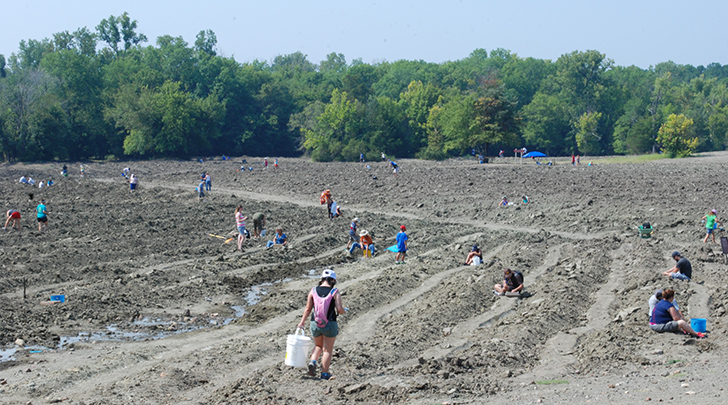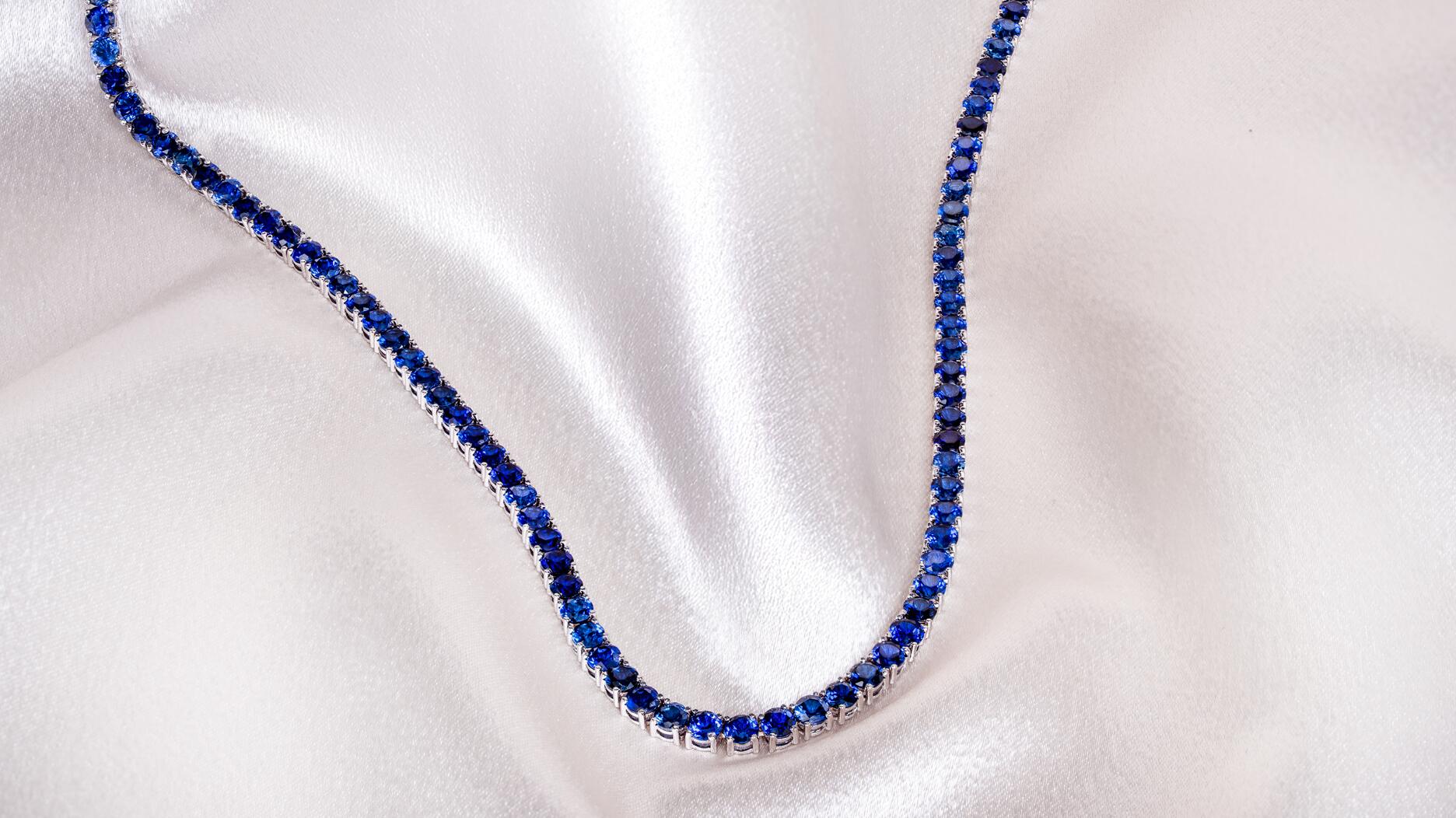Berta de Pablos-Barbier will replace Alexander Lacik at the start of January, two months earlier than expected.
Why there are diamonds in Arkansas
Editor-in-Chief Michelle Graff explores the geologic origins of the diamonds found in The Natural State.
An amateur prospector from Colorado uncovered a beautiful 8.52-carat white rough diamond and the story, as Crater stories usually do, ranked among National Jeweler’s most-read articles for the week.
Whenever we cover discoveries like these at the Crater of Diamonds, two questions always come to mind for me.
Number one, why are there diamonds in Arkansas, and are there diamonds in any other part of the United States? And, number two, are people finding more diamonds in Arkansas recently or are diamond finds just getting more coverage?
To understand why there are diamonds in The Natural State, you have to go back about 300 million years, when the two tectonic plates we now call North and South America collided with each other.
The collision formed the Ouachita (pronounced wash-a-taw) mountain range, which is located just eight miles north of the park.
Now fast-forward about 200 million years, to 100 million years ago, and the site where the park is today blows a gasket, literally (as is common where the Earth’s tectonic plates have converged.)
Instability within the Earth’s mantle forced gas and rock to move toward the surface, and there was a volcanic eruption that blew an 83-acre, funnel-shaped hole into the Earth, Crater Park Interpreter Waymon Cox explained to me via a phone interview recently.
(In case anyone is wondering, he’s called an interpreter because it’s his job to relay, i.e., interpret, information about the park’s geology, history and on how to search for diamonds to visitors.)
Cox said many diamonds, which had been forming underground due to the heat and pressure, came up with eruption.
While many were destroyed in the blast, a fair number also survived, and that’s what visitors find today at the Crater.
So, have the last couple of years, which have their share of good-sized rough finds, been an unusually active time for the park?

Cox doesn’t answer with an overwhelming yes, saying only that diamond discoveries at the park come and go in waves, influenced by a couple different factors.
First, there is the weather. More rain brings more diamond finds, as it washes away dirt and makes stones easier to find.
Secondly, there are the crowds. One big diamond find seems to begat another, not because people have hit on a particularly rich vein at the site but because big finds get a lot of publicity, bringing more people out to search.
More people searching equals more people turning up diamonds.
The GIA’s Russ Shor, who visited the Crater of Diamonds back in the 1990s when he was a writer for JCK (current JCK Editor-in-Chief Victoria Gomelsky did so as well, much more recently), said diamonds also were found near Rocky Mountain National Park in Colorado in the ‘90s and, going back even farther, JCK reported on diamonds being discovered in Georgia in the 1890s (before National Jeweler even existed).
But, overall, there has never been a huge diamond discovery in the U.S.
Shor notes that kimberlite and lamproite pipes, the two types of pipes that carry diamonds, don’t have an equal distribution of the stones and, of those that do contain diamonds, a smaller percentage still contain an amount of diamonds that make mining worth it.
(Interesting side note: the pipe at the Crater of Diamonds is a lamproite pipe. Shor says the only other known lamproite deposit in the world is the Argyle mine in Australia.)
He also notes that kimberlite pipes often come in clusters, like with the Kimberley Mines in South Africa.
At the Crater of Diamonds, Cox says they did try to mine the site commercially from 1906, when diamonds were first found there, to the 1950s.
In the 1990s, when a man named Bill Clinton was governor, the state decided it was once and for all going to determine if it was a sitting on diamond deposit that was worth mining or not.
As you might have guessed, what the state found was that the site “wasn’t commercially viable,” Cox says.
And so a park it remains. Happy hunting.
The Latest

Sotheby’s held its first two jewelry sales at the Breuer building last week, and they totaled nearly $44 million.

Winners will receive free registration and lodging for its fourth annual event in Detroit.

How Jewelers of America’s 20 Under 40 are leading to ensure a brighter future for the jewelry industry.

Here are six ideas for making more engaging content for Instagram Reels and TikTok, courtesy of Duvall O’Steen and Jen Cullen Williams.


The honorees include a notable jewelry brand, an industry veteran, and an independent retailer.

Carlos Jose Hernandez and Joshua Zuazo were sentenced to life without the possibility of parole in the 2024 murder of Hussein “Sam” Murray.

Roseco’s 704-page catalog showcases new lab-grown diamonds, findings, tools & more—available in print or interactive digital editions.

Yood will serve alongside Eduard Stefanescu, the sustainability manager for C.Hafner, a precious metals refiner in Germany.

The New Orleans jeweler is also hosting pop-up jewelry boutiques in New York City and Dallas.

Set in a Tiffany & Co. necklace, it sold for $4.2 million, the highest price and price per carat paid for a Paraíba tourmaline at auction.

The jeweler’s “Deep Freeze” display showcases its iconic jewelry designs frozen in a vintage icebox.

Take luxury gifting to new heights this holiday season with the jeweler’s showstopping 12-carat sphene ring.

This year's theme is “Unveiling the Depths of the Ocean.”

In its annual report, Pinterest noted an increase in searches for brooches, heirloom jewelry, and ‘80s luxury.

Starting Jan. 1, customers can request the service for opal, peridot, and demantoid garnet.

The 111-year-old retailer celebrated the opening of its new location in Salem, New Hampshire, which is its third store in the state.

The new catalog features its most popular chains as well as new styles.

The filmmaker’s personal F.P. Journe “FFC” prototype was the star of Phillips’ recent record-setting watch auction in New York.

The new location in the Design District pays homage to Miami’s Art Deco heritage and its connection to the ocean.

Inflations, tariffs, and politics—including the government shutdown—were among consumers’ top concerns last month.

“Longtime favorite” presenters, as well as first-time speakers, will lead talks and workshops at the annual event in Tucson next year.

Silas Smith of Meridian Metalworks won the challenge with his pendant that blends Australian and American landscapes.

The sale of the 31.68-carat, sunset-hued stone was part of Sotheby’s first series of events and auctions in Abu Dhabi.

Most customers who walk into your store this month have made up their minds. Your job is to validate their choice, Emmanuel Raheb writes.

The collection features characters and motifs from Ukrainian folklore, including an enchanted mirror and a magic egg.

MatrixGold 3.11, the newest version of the jewelry design program, offers more flexibility, precision, and creative control.


























